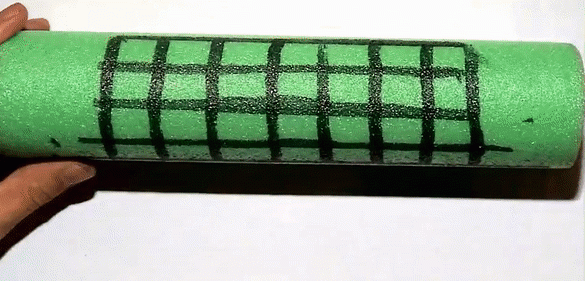Teaching
Courses taught
ASEN 3112 - Structures
ASEN 3712 - Structures
ASEN 3802 - Aerospace Sciences Lab II
ASEN 4018 - Senior Projects I: Design Synthesis
ASEN 4028 - Senior Projects II: Design Practicum
ASEN 4218/5218 - Lage Space Structures Design
ASEN 5212 - Composite Structures and Materials
Teaching demos
I use several demos and simple experiments to illustrate concepts during class. A document camera or webcam will be needed for some of them. Some ideas are presented below.
Vibration of 2-degree of freedom system
Basic vibration concepts can be demonstrated effectively with a spring and a mass, but it is harder to visualize vibration modes in discrete systems. A good model system is a 80/20 frame with two equal masses and three springs, connected to the frame and to each other. Cardboard and with black dots on white paper are attached so that it is easier to perform image processing on the resulting vibration, regardless of the background.
The system can be solved by hand, yielding two frequency modes: the masses moving together, and the masses moving against each other, in both cases with the same velocity (so, [1 1] and [1 -1]). The frequencies are off by a square root of two factor. It is possible to actuate both modes by moving the masses by the same distance in either the same or opposite directions and letting them go. Any other combination of initial conditions excites both modes, which results in visually more complex displacement (which are just a linear combination of the two modes). Recordings like the ones below, taken during lecture, can be processed with a Matlab code tracking the dots in just a couple minutes, to display the displacement of each case and show that the modes and frequencies are indeed as expected.
Strain, Poisson's ratio, and frame rotation
A piece of rubber and a sharpie can be used to illustrate strain in a material, show how it can be calculated through the displacement of several points, and highlight two additional concepts. First, it is a very clear example of the Poisson's ratio, showing contraction in the direction perpendicular to the applied loading. Second, it helps illustrate strain transformation between frames. Drawing squares in two difference reference frames (i.e., one is rotated by 45 degrees) highlights that the values of the strain depend not only on the material and the loading, but also on the reference frame: the square aligned with the loading stretches but does not shear, while the square drawn at 45 degrees shows shearing (i.e., change in the angles).
Torsion on a foam pool noodle
Pool noodles are great to illustrate torsion, particularly when drawing a grid aligned to the axial and circumferential directions. It illustrates several important aspects of torsion. There is no visible change in diameter, or in the distance between the circumferential lines in the grid, meaning that there is no change in size (i.e., no normal strain). It also shows very clear the shear deformation, that takes place in the axial-circumferential plane.

Failure under torsion: brittle versus ductile, and stress transformations
Torsion is also a good way to show the different between failure of ductile and brittle materials, and emphasize how stress and strain change with the choice of reference frame. Applying torsion to a piece of chalk (a brittle material) results in failure under tension, which is maximum in a plane at 45 degrees with respect to the axis of the cylinder. In contrast, a chalk under bending fails at 90 degrees with respect to the axis of the cylinder (direction of maximum tension). If a paper clip, a ductile material, is deformed under torsion, it breaks also at 90 degrees with its axis, because in this case the failure is in the plane of maximum shear.

